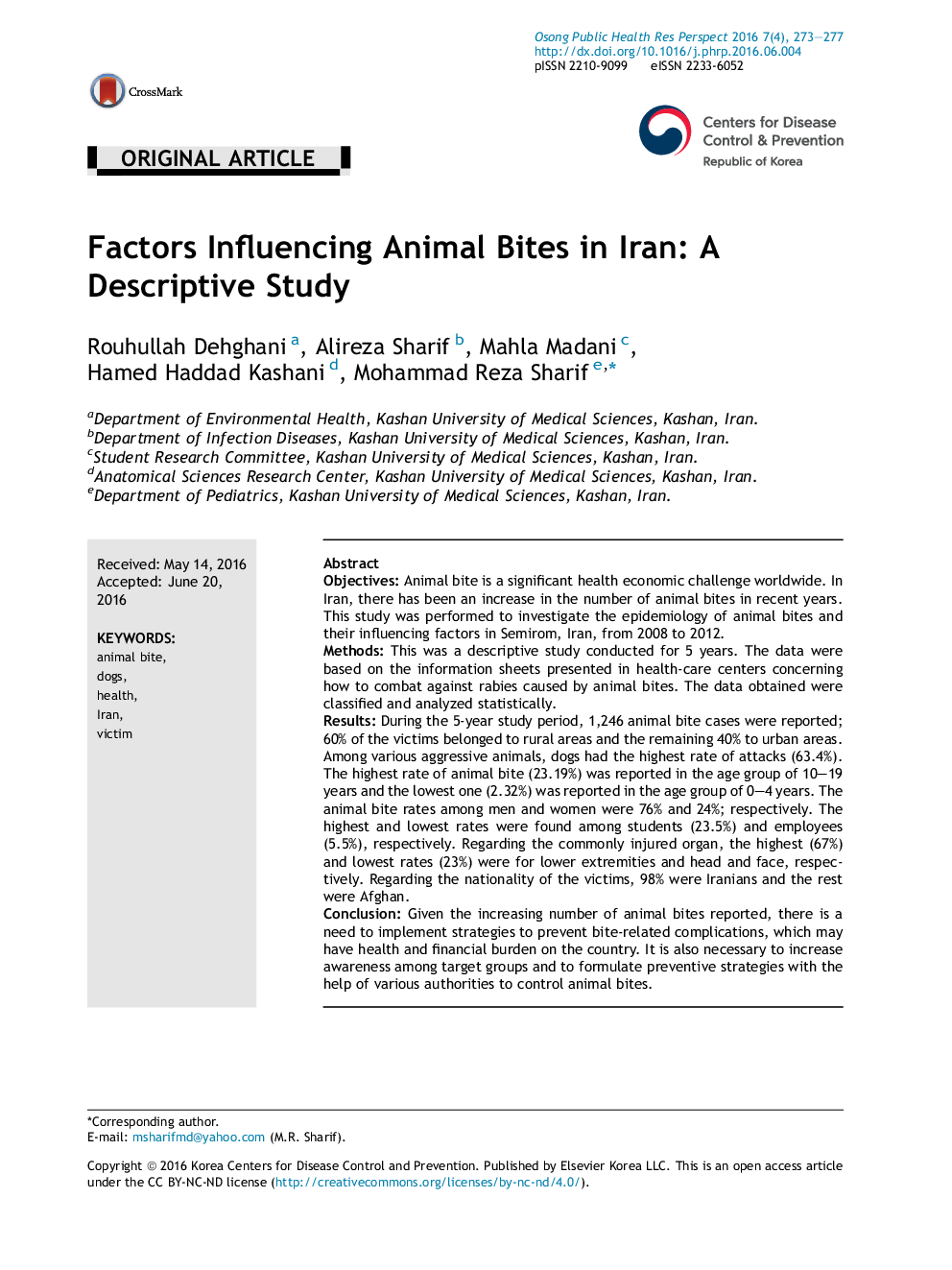| Article ID | Journal | Published Year | Pages | File Type |
|---|---|---|---|---|
| 4201832 | Osong Public Health and Research Perspectives | 2016 | 5 Pages |
ObjectivesAnimal bite is a significant health economic challenge worldwide. In Iran, there has been an increase in the number of animal bites in recent years. This study was performed to investigate the epidemiology of animal bites and their influencing factors in Semirom, Iran, from 2008 to 2012.MethodsThis was a descriptive study conducted for 5 years. The data were based on the information sheets presented in health-care centers concerning how to combat against rabies caused by animal bites. The data obtained were classified and analyzed statistically.ResultsDuring the 5-year study period, 1,246 animal bite cases were reported; 60% of the victims belonged to rural areas and the remaining 40% to urban areas. Among various aggressive animals, dogs had the highest rate of attacks (63.4%). The highest rate of animal bite (23.19%) was reported in the age group of 10–19 years and the lowest one (2.32%) was reported in the age group of 0–4 years. The animal bite rates among men and women were 76% and 24%; respectively. The highest and lowest rates were found among students (23.5%) and employees (5.5%), respectively. Regarding the commonly injured organ, the highest (67%) and lowest rates (23%) were for lower extremities and head and face, respectively. Regarding the nationality of the victims, 98% were Iranians and the rest were Afghan.ConclusionGiven the increasing number of animal bites reported, there is a need to implement strategies to prevent bite-related complications, which may have health and financial burden on the country. It is also necessary to increase awareness among target groups and to formulate preventive strategies with the help of various authorities to control animal bites.
